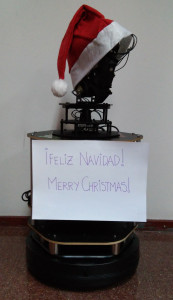Bueno, pues después de pegarme con el Lego, Matlab/Simulink y la conexión wifi en Ubuntu, he probado con la opción Windows montando yo la red con un router wifi, en este caso. Estos son los pasos a seguir:
- El router que he usado es un Linksys Compact Wireless-G. Como el PC que he utilizado está detrás de un proxy, en las opciones de configuración de red de Windows 10 ha sido necesario especificar que el proxy no se use para la URL del administrador web del router.
- El firmware del LEGO EV3 para poder trabajar con wifi en Simulink/Matlab 2016b es el 1.08. Ni el firmware 1.09 ni el 1.03 funcionan.
- Para conectar el EV3 usando los dongles Edimax o NetGear que explicaba en la entrada que enlazo al principio del post, he añadido la red del router con la opción Add Hidden Network, indicando el SSID que aparece en el administrador web del router. La seguridad es None.
- El funcionamiento correcto de la conexión se puede comprobar haciendo un ping desde el Command Prompt de Windows.
- Antes de trabajar en Simulink, es recomendable comprobar que el robot está accesible desde la ventana de comandos de Matlab.
- Finalmente, lanzar Simulink, seleccionar la opción WiFi como Host to Target Connection en los parámetros de configuración del hardware del modelo, especificando la IP y el Device ID del robot (esa información está disponible en la pestaña Settings , opción Brick Info del EV3).
Con este procedimiento he conseguido descargar un programa en el EV3. También es cierto que a partir de ahí el robot se ha colgado. Pero, al menos, la conexión se ha hecho…
Well, after fighting the Lego, Matlab/Simulink and WiFi connection under Ubuntu, I have tried the Windows option, but in this case I also set up a network with a WiFi router. These are the steps to follow:
- I have used a Linksys Compact Wireless-G router. Since the PC I have worked with is behind a proxy, I had to add the router web admin URL to the no-proxy exceptions in the network configuration of Windows 10.
- The LEGO EV3 firmware that works with WiFi in Simulink/Matlab 2016b is version 1.08. Neither version 1.09 nor 1.03 works.
- In order to connect the EV3 with the Edimax or NetGear dongles that I explained in the link at the beginning of this post, I have added the WiFi network of the router with the option Add Hidden Network, using the SSID shown in the router web admin page. I have chosen None security option.
- You can check that the robot has connected to the router with a simple ping from the Windows Command Prompt.
- Before launching Simulink, it is a good idea to check that the robot is accessible from the Matlab commands window.
- Finally, you should launch Simulink, choose the WiFi option on the Target Hardware Resources of your model, incluing the IP and Device ID values of the robot (you can get those values in the Settings label of the EV3, option Brick Info).
Following these steps I have managed to download a program to the EV3. It is also true that from that moment the robot got frozen, but at least the connection was made…








